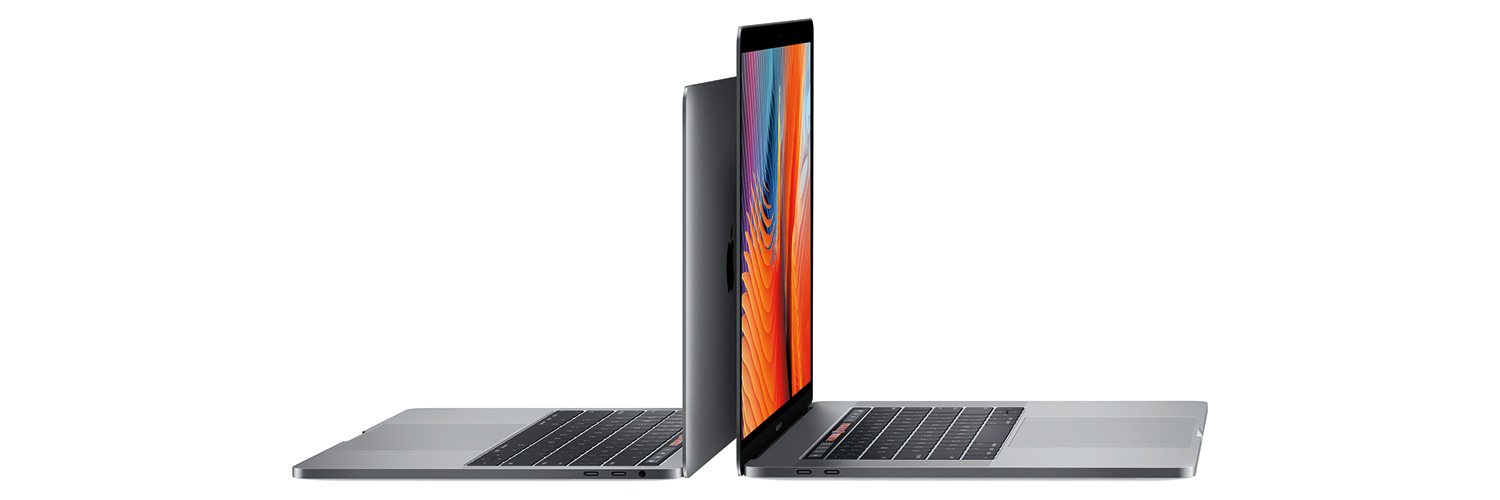The state of MacBooks
Over the past year, I distinctly recall a palpable frustration with Apple’s lineup. Not much had changed tangibly in years and lots of people with lots of different needs were all devouring the rumors waiting for their specific needs to be solved. It was basically a perfect recipe for disappointment and oh has there been disappointment. Unfortunately the need to have top tier gaming performance, be able to run high-teens numbers of VMs, last all day on battery, have both old ports and only new ones, and more just can’t all fit into one system. Not even a line of systems.

A glimpse of the future…with a few stumbling blocks (source: Apple PR)
Notable issues
I want to talk to some of the FUD that has led to a number of complaints, but first there are certainly a few areas where Apple could have done better and helped curb some of the unrest.
-
No iGPU-only option for the 15" model. Apple built expectations starting with the 2012 release of the MacBook Pro with Retina display that there would be a number of price tiers making the computers more accessible depending on your choice of compromises. Providing a 15" MacBook Pro without an AMD graphics option available could have helped extend that entry level 15" model price downward.
-
No compatibility aids in the box. One USB-C → USB-A dongle wouldn’t have been the end of the world. It’d bring out of the box compatibility for the iPhone, your current external drive, and that one flash drive still attached to your keychain. Of course the quantity of complaints for shipping a computer that comes with a dongle to be useful would be just as bad as I can’t use anything without buying a dongle but I digress…
-
Not refreshing the Mac Pro at the same time (or earlier). Intel is a significant issue here. There aren’t any hex-core Skylake-based Xeons out right now and there are zero Kaby Lake Xeons of any kind. But Broadwell has tons of configurations and this machine should have been updated when those became available. Yes, the GPU story would be incomplete as it would still have been stuck in the 28nm generation, but we wouldn’t be 1000+ days since an update with no product to pitch towards people eager to spend even more money for even more computer.
-
All Touch Bar equipped MacBook Pros should ship with 16GB of RAM. They just should. These are supposed to be pro machines, the prices went up. The 13" machines shipping with 8GB is unfortunate.
I’m not going to include the SD card here. The it’s not a pro laptop crowd should really take a look back at the history of the MacBook Pro and the issues that were made large in the past…lest we forget the removal of Firewire and the ExpressCard slot. The prevailing argument of the time being that going from an ExpressCard slot to an SD card slot was a downgrade unlike other legacy port eliminations in the past. Now we’re back to a port that lets you connect a number of multipurpose things instead of providing a single use and that’s apparently the worst, too. Yes, Compact Flash has largely gone away in the interim and was a driving factor for flexibility being important, but the result is bemoaning the return of options.

The dongle you put in your computer (source: buysku.com)
Misconceptions
From here we enter the territory of they literally could not do what you want without either shipping nothing or shipping a piece of functionality that compromises the rest of the product too strongly in another area.
-
It doesn’t have Kaby Lake? There’s a lot here. First, there are no quad core CPUs for the 15" line (in the 40-50W vicinity). Second, there are no 20-30W dual core CPUs for the 13" line. Intel did release 15W CPUs which would be suitable in the Air lineup (or the non Touch Bar MacBook Pro) and 4.5W CPUs for the MacBook, but launching newer generation hardware (with low tangible benefit) on the lowest tier products seems like a recipe for customer confusion.
-
It doesn’t have DDR4? RAM is a non-trivial power drain on the overall system and Apple uses LPDDR3 modules (LP being low power). Skylake doesn’t support LPDDR4. Kaby Lake wont even support LPDDR4. Let’s also not forget that switching technologies for switching technology’s sake isn’t useful. DDR4 provides improvements in only a small slice of computing tasks and otherwise provides minimal if any tangible benefit even with a significant clock speed increase. With greater clockspeed comes greater latency timing.
-
It doesn’t come with a 32GB RAM option? See above. This would have pushed Apple away from LPDDR3 modules, again, compromising battery life in a way that is not in line with any decision they’ve made in providing a baseline of battery life for the past 4 years of models of computers. Intel is not helping here.
-
AMD graphics? Nvidia approached this generation from the top down, releasing its highest powered devices first and is only now starting to fill in its lower power options suitable for laptops hoping to have any battery life. AMD took a different approach, hitting baseline VR and then filling in its lower power products next. AMD also focuses on OpenCL, whereas Nvidia has continually pushed CUDA. Apple embraced OpenCL a long time ago and isn’t likely to make any changes in that area. I know it’s tempting to think of the performance of Nvidia’s flagship devices, but the battery life compromise (or the weight/portability compromise for having more battery) is again, not something that should ever have been expected in the MacBook Pro line. External GPUs for OS X aren’t far. The choices here are in line with the overall performance at every step of the MBP evolution.
-
The price is so high! Apple arguably added an Apple Watch in material cost with the Touch Bar and Touch ID sensor. They also are utilizing extremely high performance SSDs. Claiming 3+GBps performance all but guarantees a variation or competitor to Samsung’s 960 Pro line of SSDs. The outrage at the Apple Tax™ for the +$1200 cost on the 2TB SSD (and respectively the cost of the 1TB upgrade) seems reasonable, but at the time of this writing, the 2TB 960 Pro retails for $1300. It’s just what the hardware costs. They included Alpine Ridge controllers, didn’t offer an iGPU 15" model, increased the size of the force touch hardware for the trackpad, and once again dramatically improved the display. This all costs money. They filled in some of the price gap with the non-Touch Bar model…
-
The non-Touch Bar model is slower than last year’s 13" MacBook Pro In base frequency, yes. It’s a 15W part replacing a 28W part. That said, its turbo clock speed is the same (3.1GHz) and in some preliminary benchmarks it is performing equivalently. In many cases the performance differential will simply not be noticeable if even existent at all (particularly with a newer generation Intel iGPU). This model is designed to attract people from the Air (15W tier) and offers significantly more than the outgoing Air at a small price premium.
In order to prove that this future is the right future, Apple and third parties need to knock the functionality of the Touch Bar out of the park. I’m not worried about the decision for all USB-C. I think we will find in the coming years that the all USB-C lifestyle will reduce peripheral complexity and make life actually easier. But for now, we’re in that transition phase.

External GPUs with OS X/Apple Hardware support shouldn’t be far off. (source: thewolfe.io)
Where we go from here
I want to get rid of my desktop entirely. I want to finally have OS X running as my primary computer with an external GPU/SSD for Windows and Mac gaming when the mood strikes. And I want to be able to take that computer with me and have powerful-enough graphics when I’m away without compromising on battery life.
I really don’t want a touch screen laptop. The Touch Bar is just the right amount of touch interactivity without a sea of fingerprints and arm-raised ergonomics.
Apple’s 15" MacBook Pro is basically opening the door to the future I want. Just 3-4 weeks to wait…